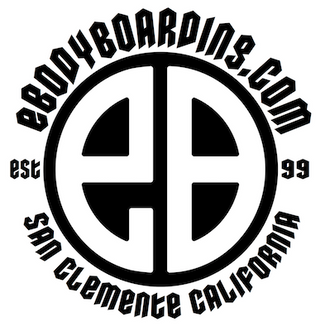How to bodyboard- Tips and tricks to getting started with Jay Reale.
Time to get back to the basics! This article is for those of you who have no idea where to start in this great sport, so my goal is to sum it up in a few paragraphs and make it easy for you.
The easiest way to get into bodyboarding is to have someone that already bodyboards show you how it's done. If you happen to be anywhere near our San Clemente, California headquarters during the summer, problem solved! Our friends at Bodyboarding Adventures run clinics all summer through the City of San Clemente with highly-qualified instructors that not only show you how it's done, but they have all the gear you need, so all you have to do is sign up, be able to swim and show up at the beach. If you aren't here in Orange County, then read on! 
Let's start with equipment. You can familiarize yourself with the parts of a bodyboard by checking the Bodyboard Anatomy page as well as our other blog about board construction, Cores and stringers and mesh...oh my!
*BOARD- Most beginners will go with an entry-level board. These boards are the cheapest option available and typically come with a basic leash that you wrap around your wrist. Don't expect to be riding Pipeline on these types of boards, but they will float you and give you a good ride. Wondering which size to get? Check our Bodyboard Size Chart. When searching for an entry-level board you can use the search by board length option, and then use the filter for "EPS" core boards.
If you want to upgrade to a better board, you'll also want to buy a leash for that board. There are two types of leash- wrist and bicep. Check our video on this subject below:
*FINS- Swim fins are important if you want to bodyboard "properly". Are they a must? Definitely not. If you just want to start out by wading out into the ocean with your board and then jumping into the whitewater for a quick ride in, no fins needed. But, if you want to make your way out to where the waves are first starting to break and actually ride diagonally toward the beach and maybe try a basic move, fins are a must. They not only help you kick your way out into the surf, but also help immensely with catching waves, and also steering and controlling the board while riding the waves. 
The toughest part with fins is finding a comfortable pair, but you can read our blog post on this topic.
*LOCATION- You may or may not having a choice of where you are going to try bodyboarding for the first time. If you do have a choice, ideally you want to be at a beach that has lifeguards (Always nice to have some backup if you find yourself in over your head-no pun intended) and minimal hazards like rocks and/or reef bottom. Sand-bottomed beaches are ideal. You also want to be sure the waves aren't huge with crazy currents for your first try at this sport. There are some outstanding surf report websites where you can check the waves before going to the beach that day. My personal favorite is Surfline.com. They have live cameras at hundreds of beaches along with up-to-date surf reports and forecasts. When in doubt, just ask a lifeguard.

So, once you've picked your spot and your day, take a few moments to watch the surf to make sure you look for any potential hazards like rocks, unexpected larger waves, etc. and watch people already in the water to see if there are any currents moving them around.
*GET OUT THERE- Whether you have swim fins on or not, take your time and start close to shore where your feet can touch the bottom. Practice the timing of launching yourself forward as the whitewater approaches you from behind. Get the feel of riding along in the whitewater and turning from side to side. Move forward and backward on the board to see how it affects the board's speed and control. If you're wearing fins, see how you can put pressure on one foot or the other and change the steering and speed of the board.
Once you've mastered that, consider paddling out to where the waves are starting to break. This is the tough part. Most first-timers struggle with what we call "wave knowledge". That is, knowing where to be as the waves approach and how to anticipate how they are going to break. Wave knowledge is something that can't be taught; it is learned by spending time in the ocean, so the more you paddle out, the better your bodyboarding experience will be. You'll feel more comfortable in the ocean, you'll have an easier time navigating around the waves, and you'll eventually be able to focus on actually riding the waves rather than avoiding being smashed by them.
Bodyboarding is a life sport. We started our kids at age 2 and I continue to ride with people well into their 70s. The only investment is the equipment when you are starting out, and your time- the beach is FREE (except in New Jersey in the summer, ha, ha). See you in the water!
PS. Our friends at Bodyboard-Holidays offer trips to different locations around the world and have world-class coaching at most locales! Get in touch with them to combine your love of bodyboarding with a trip to an exotic destination!
